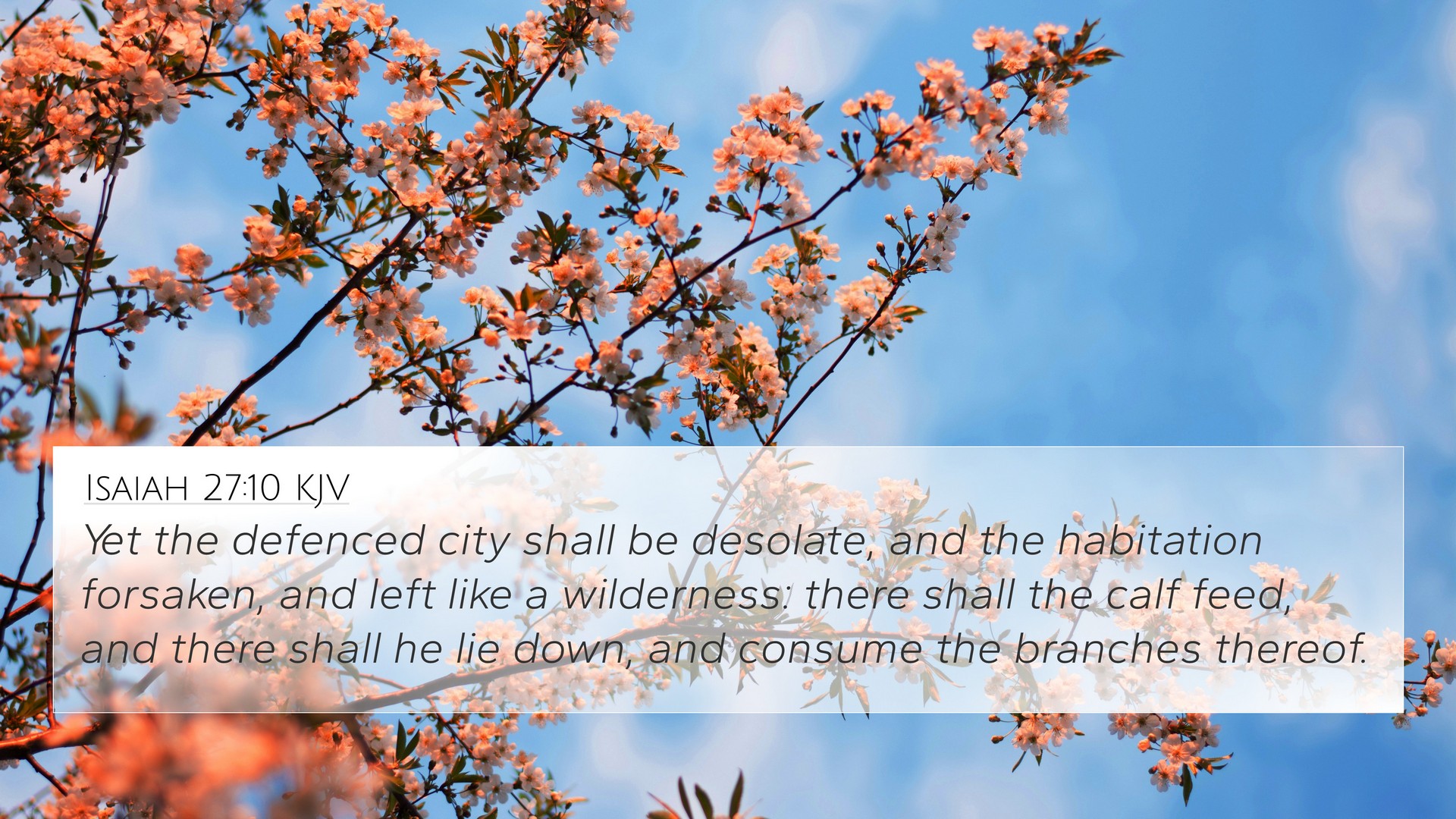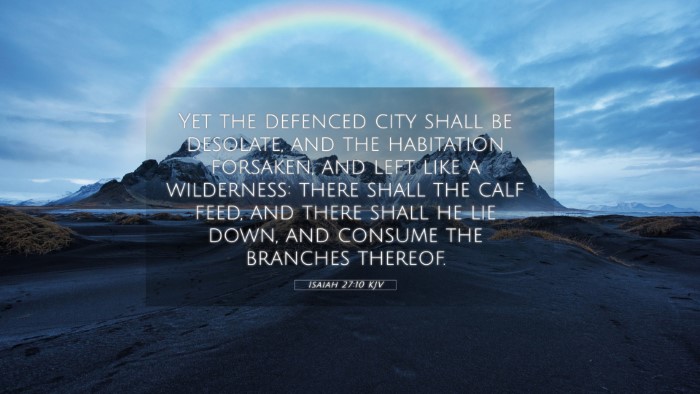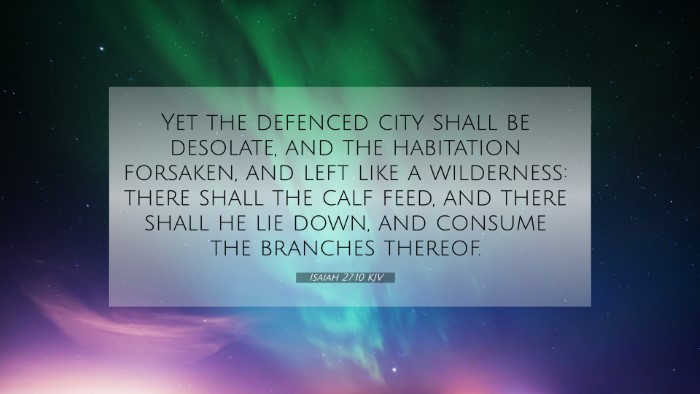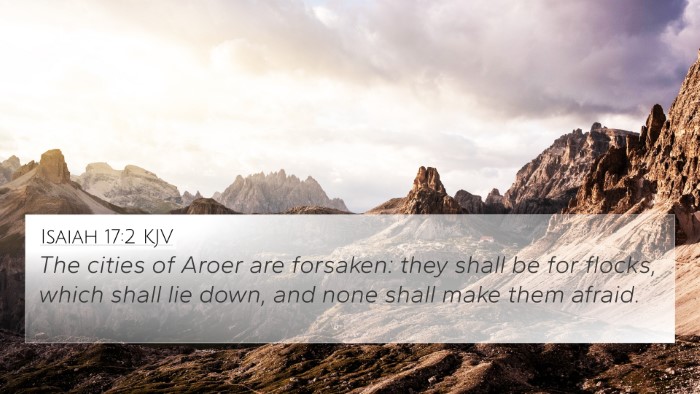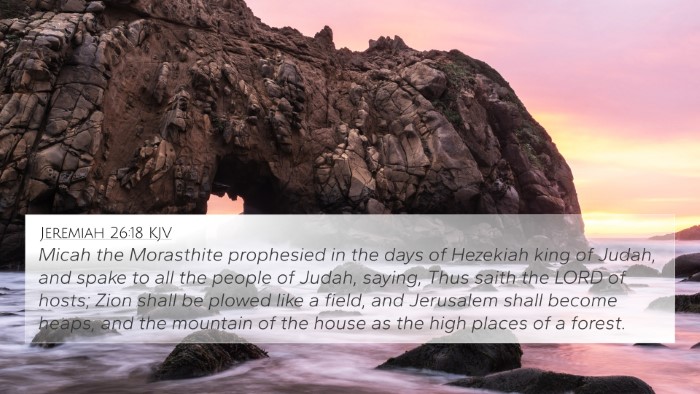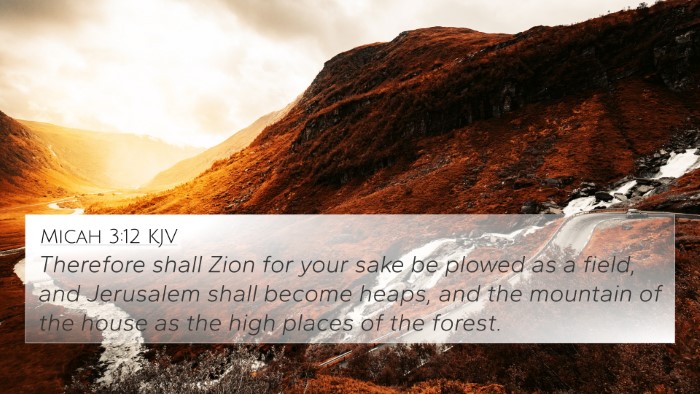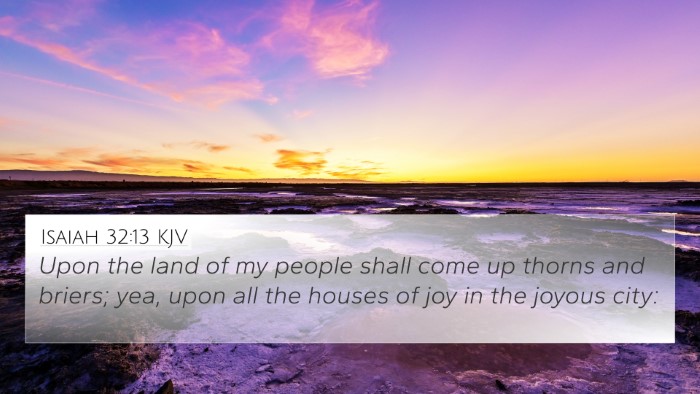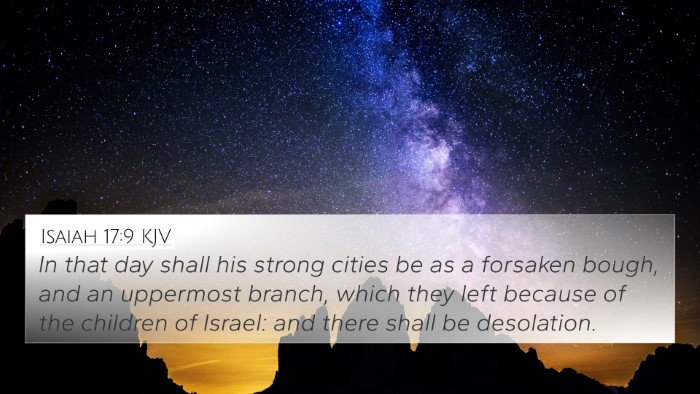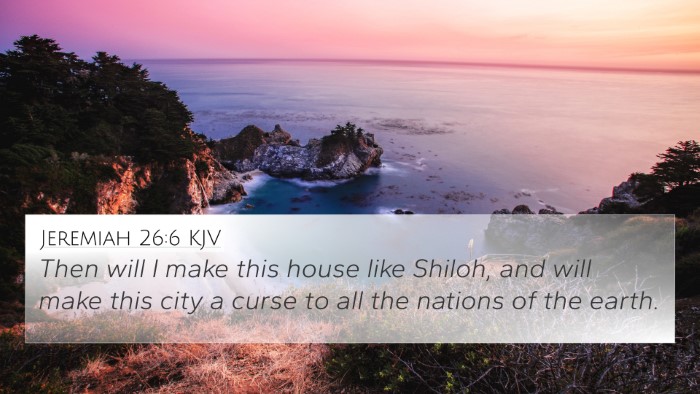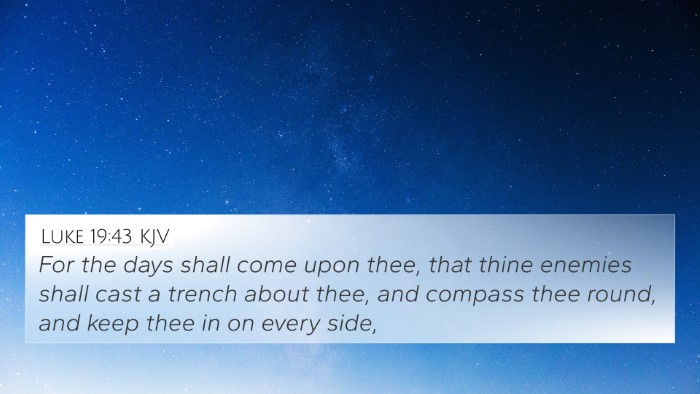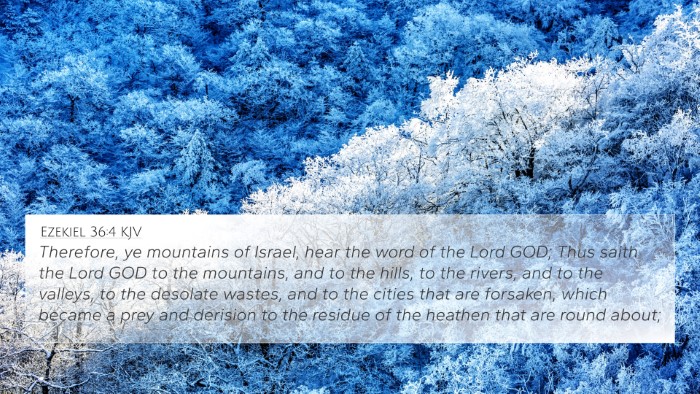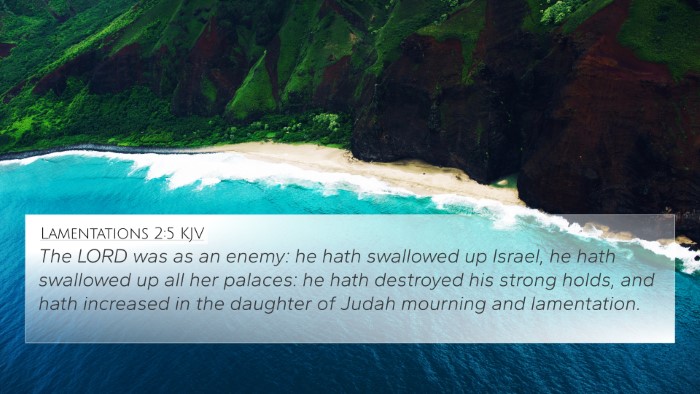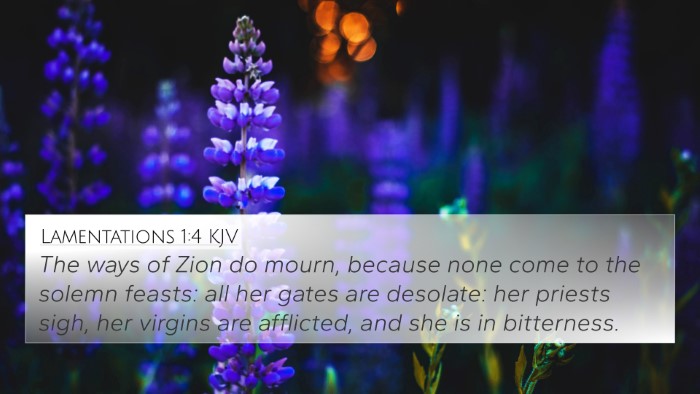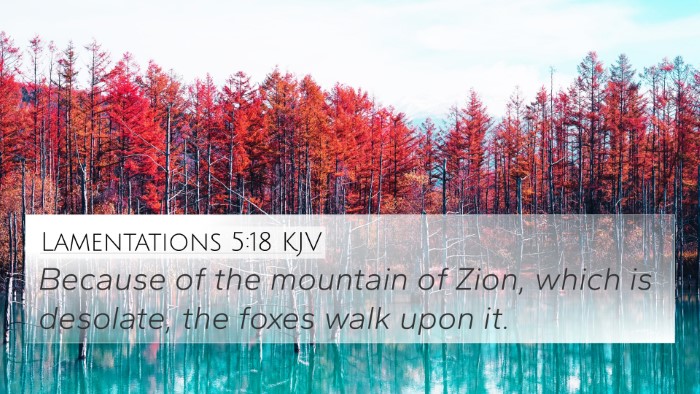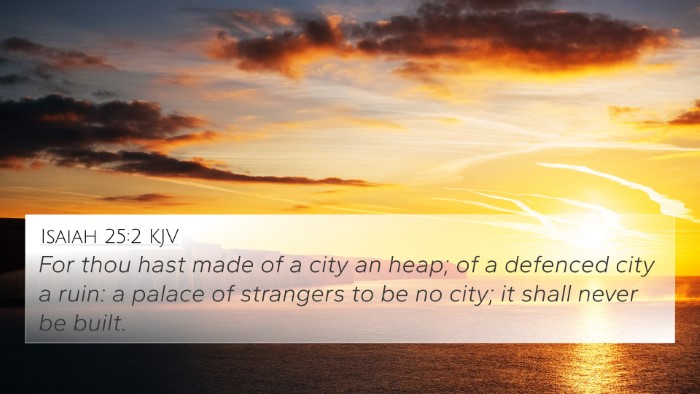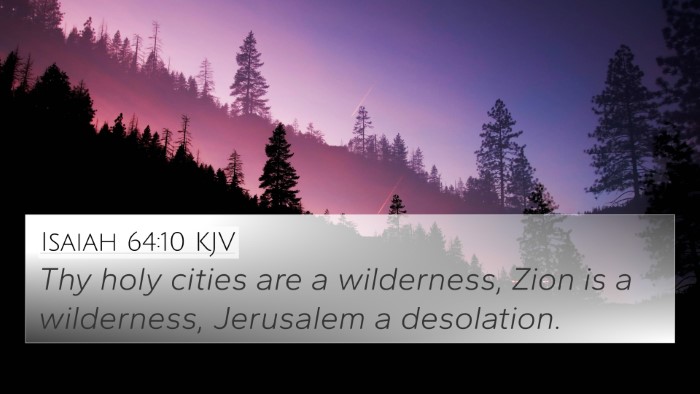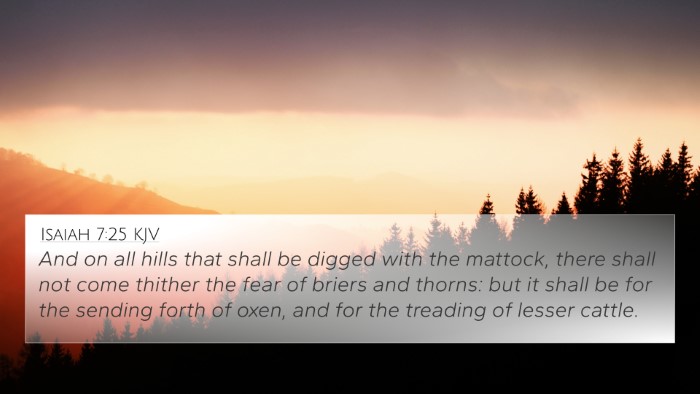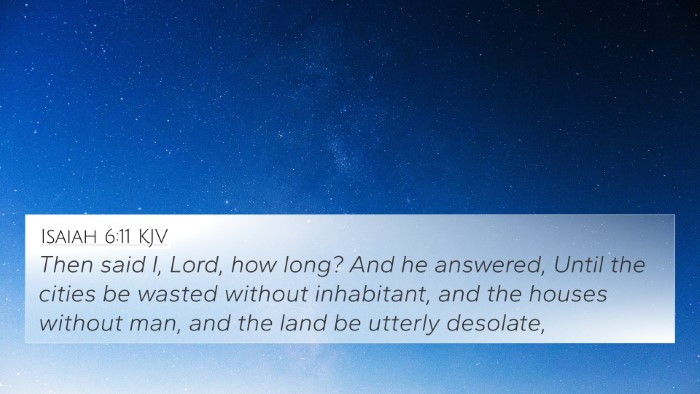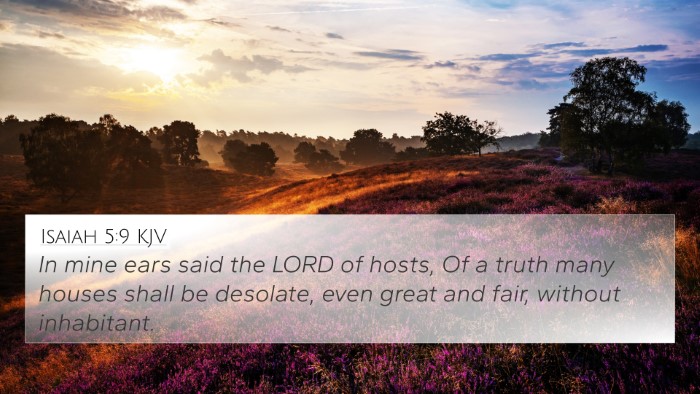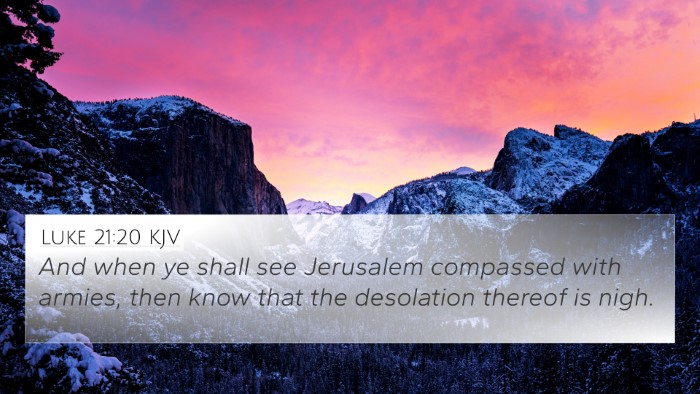Understanding Isaiah 27:10
Isaiah 27:10 states: "Yet the fortified city will be desolate, the habitation forsaken and left like a wilderness; there the calf will graze, and there it will lie down and consume its branches." This verse signifies the desolation that often follows divine judgment and serves as a metaphor for spiritual abandonment.
Combined Insights from Public Domain Commentaries
This verse has been analyzed by several biblical scholars such as Matthew Henry, Albert Barnes, and Adam Clarke. Their interpretations focus on the themes of desolation, judgment, and redemption.
Matthew Henry's Commentary
Henry explains that this verse depicts the desolation of a fortified city as a sign of God's judgment. He emphasizes that the abandonment of the city—once protected and thriving—reflects the spiritual condition of those who turn away from God. The references to a calf grazing underscore the abandonment, as life returns to a once-civilized place now left desolate.
Albert Barnes' Notes
Barnes provides a thorough explanation regarding the imagery of the city being likened to a wilderness. He notes that the desolation is not merely physical but also spiritual, indicating God’s withdrawal of protection and favor. The mention of the calf lying down signifies a return to a state of simplicity and neglect, emphasizing the consequences of forsaking spiritual truths.
Adam Clarke's Commentary
Clarke adds to the theme by discussing the prophetic implications of the prophecy. He interprets the wilderness as a place of absence where once the glory of God might have been revealed. The consumption of branches by the calf symbolizes the complete consumption of what was once prosperous, serving as a poignant reminder of the fragility of human endeavors without divine support.
Bible Cross-References
Isaiah 27:10 connects with several other scriptures, enhancing understanding through Bible verse cross-references. Here are notable connections:
- Isaiah 5:6 - "I will make it a wasteland." This connection emphasizes judgment.
- Jeremiah 4:7 - "A lion has come up from his thicket." Represents destruction.
- Matthew 23:37 - Jesus laments over Jerusalem’s desolation.
- Revelation 18:2 - The fall of Babylon mirrors the desolation of cities under God's judgment.
- Luke 13:34 - Relates to God's intent to gather His people.
- Isaiah 24:10 - "The city of chaos is shattered." Reflects similar themes of desolation.
- Matthew 24:2 - Foretelling the destruction of the Temple, showing parallels of divine judgment.
Thematic Connections
This verse also illustrates broader themes found throughout the Bible:
- Desolation: A common theme indicating God’s judgment.
- Forsakenness: Symbolizing the consequences of turning away from God.
- Redemption: Implicit in the return to God following desolation.
Comparative Bible Verse Analysis
An analysis of Isaiah 27:10 reveals how it links with various scriptures across both the Old and New Testaments. The desolate city can be seen as a metaphor reflecting the conditions in the hearts of believers when they stray from God. One can identify connections between Biblical texts through the following approaches:
- Tools for Bible cross-referencing: Utilize a Bible concordance or Bible cross-reference guide.
- Cross-referencing Bible study: Identifying themes and connections through systematic study.
- Inter-Biblical dialogue: Understanding how different texts speak to similar themes.
- Comparative study of Pauline epistles: See how Paul addresses similar themes of judgement and redemption.
Conclusion
Isaiah 27:10 holds profound meanings that extend throughout the scriptures. By employing a strong understanding of Bible verse parallels and themes, one can unlock deeper insights into God's nature and His dealings with humanity. Utilizing effective cross-referencing Bible study methods facilitates a richer understanding of how these spiritual truths are interwoven throughout the Bible.
Utilizing this verse and its connections in sermon preparation can significantly enhance the teachings, illustrating God's continual call for repentance and redemption. As one delves deeper into the scriptures, the connections between verses create a harmonious dialogue revealing the overarching narrative of salvation history.
